Spring/Easter Break – 2010. Our son, Tony, and his betrothed, Stephanie, who are Middle School Teachers in North Virginia, finally had a week off to come see us in Africa. We met them on Saturday evening at Murtola Mohammed International Airport in Lagos, and took the company airport shuttle bus back to our 3-bedroom apartment in Ikoyi. After decompression, dinner and a good night’s sleep, we started their week’s adventure with a Sunday boat trip up the coast to our Beach House.
A day of sun, surf and food was followed by evening dinner at the American Embassy’s Guest Quarters Restaurant, and a relaxing evening. Monday brought exploring the Lekki Nature Conservancy, a 4km trek through a monkey-inhabited forest, including a 150ft climb up into the forest canopy observation “tree house”.
The day included shopping the local crafts at Lekki Market, and Julie’s famous “Taco Night” – even in Nigeria! Tuesday morning allowed for some local sightseeing around Victoria Island and Ikoyi, but ended with a trip back to MMIA for flights to Nairobi, Kenya. This experience started poorly with lackluster service at the Airport Lounge, followed by unannounced flight delays, a closed concourse, and finally being stuck on the plane, where we were delayed on the runway for 60 minutes with no air conditioning. The flight then went from Nigeria to Kenya on Kenyan Airways via Cotonou, Benin, and went from bad to worse as we sat again at the gate in Cotonou for nearly an hour again with no AC. Finally, we took off for an uneventful 5-hour flight to Nairobi, where we were greeted by our guide and driver, Fred. Unfortunately, our travel delays put us square into the middle of rush hour traffic, but finally, Fred eased our way out of the city and we headed to our first destination in the Great Rift Valley.
In spite of recent rains, Kenya over the past year and a half had been the site of very serious drought conditions, and the consequences were evident everywhere. As we passed along the edge into the Rift Valley, mature dead trees stood out in contrast to the renewed life that the recent water nursed, Mt Longonot, at 2770 meters, is tallest mountain in the local valley, and our first destination, Lake Naivasha, is the highest lake. All along the way, we passed new crops and farmers working and moving wares via the ever-present donkeys and cart.
Before turning off the main road and heading to the Lake, we stopped at a tourist/curio shop with life-sized wood-carved lions in various poses. Although beautiful works of art, the logistics of shipping a 250kg wood carving from this remote location boggled the mind.
Upon arriving at Lake Naivasha, we contracted a local fishing camp for boat tours onto the lake to see the hippos. The Lake is 8-10 feet lower due to the previous drought, and the boatmen must navigate long, narrow waterways to now access the lake. Once into the lake, we saw numerous hippos, but our boat’s motor soon died, and we washed ashore at a large island we waited for help from the village with a replacement boat.
While waiting, we walked along the island’s coast viewing hippos from shore. Local boys were fishing for, and catching, 15-inch carp. When our replacement boat finally arrived, we continued our tour by approaching 2 more hippo families of 8 hippos each. Our boatman then took a dead 5-inch silver fish up in his hand, spotted a Fish Eagle in a coastal tree, let loose a shrill whistle and waited. The Fish Eagle immediately spread his wings and left his perch. The boatman then threw the fish into the water, and we watch transfixed as the Fish Eagle swooped down to get it!
We then went ashore on another large island, which sometimes connects to the mainland, where we began a walking safari. Small herds of zebra, wildebeest, waterbucks, Thompson gazelles and water buffalo eyed us warily, and moved cautiously from our path. On the way back to boat, a serious thunderstorm started forming causing us to hurry back to the boat, head back to our launching spot, and jog back to our safari vehicle, just in time to beat the storm. We drove 30 minutes through a driving rain storm to the Lake Naivasha Simba Lodge, and checked in. By then, the rain had stopped, so we ate lunch, settled in our rooms and reconvened to our safari vehicle for a short trip to Hell’s Gate Park. In the park, we saw baboons, zebra, giraffes, Thompson gazelles, Grant’s gazelles, impalas, warthogs, and guinea fowl.
We walked to a vista point above the gorge, and then drove up to see one of the largest geothermal wells complexes in Africa, and its associated power generation station. Then, it was back to the lodge for drinks, dinner, and bed at the end of a long but exciting day.
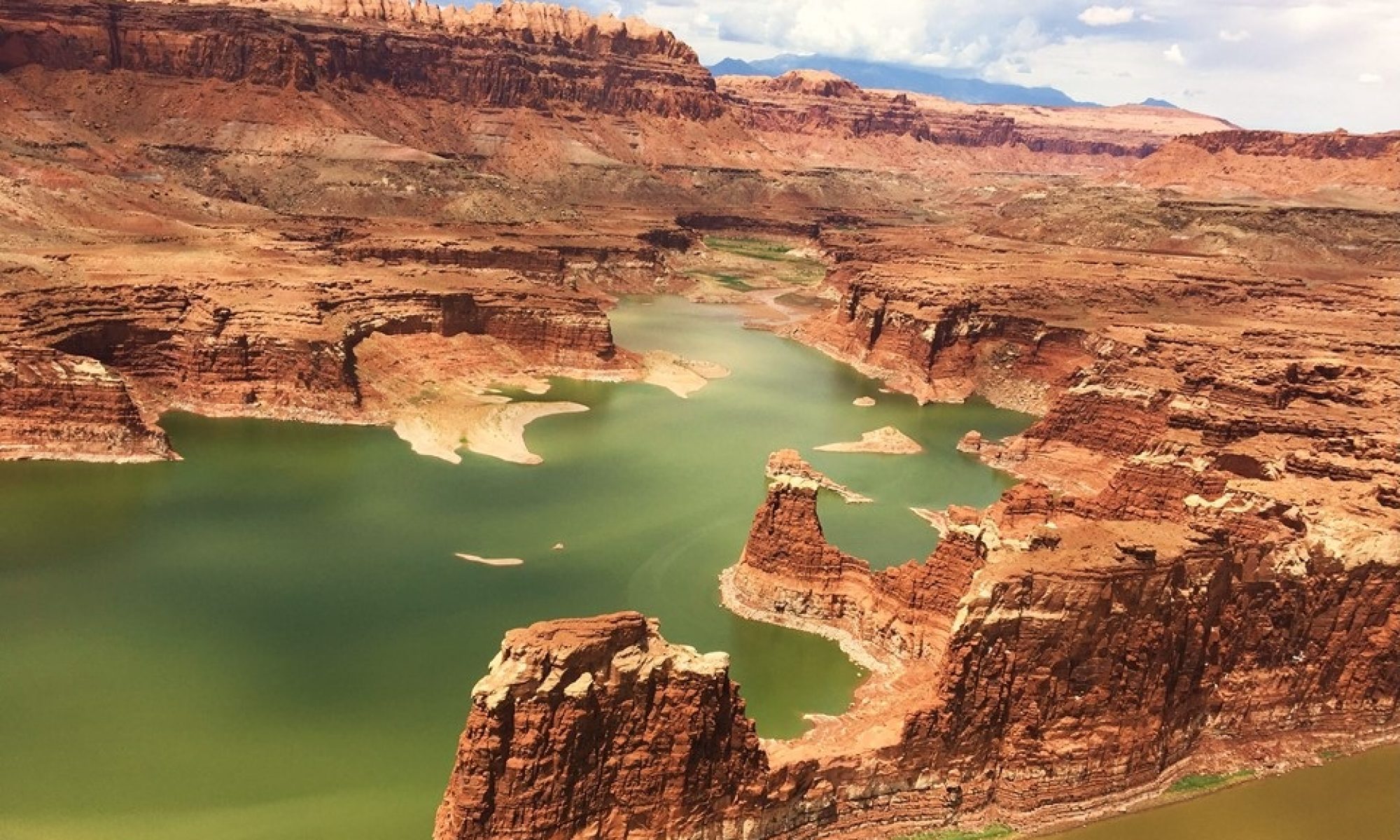

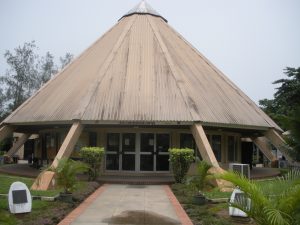
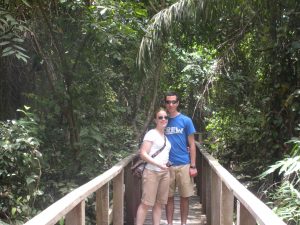
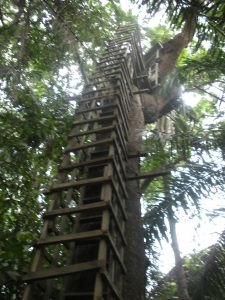






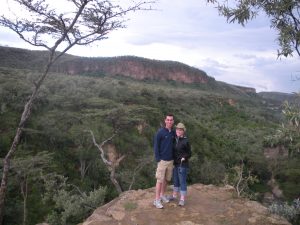


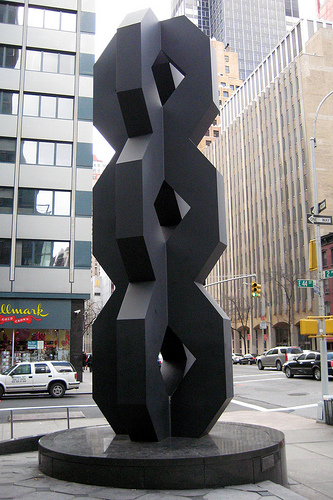
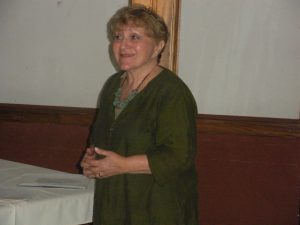
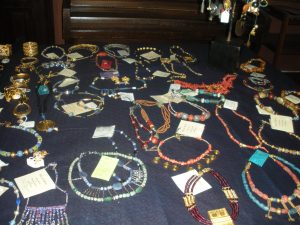
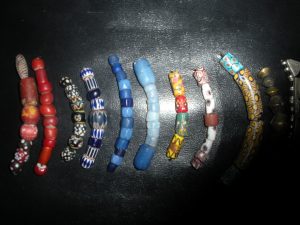
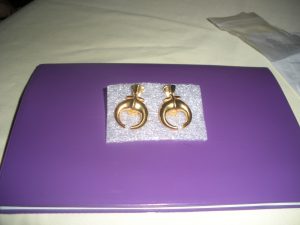
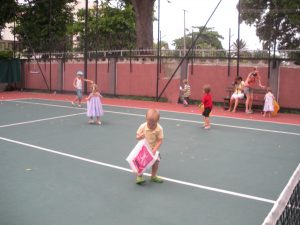
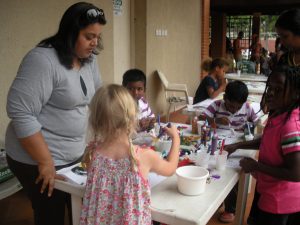
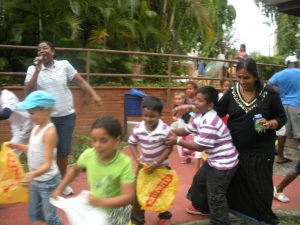
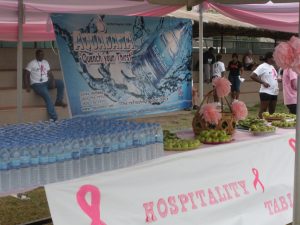
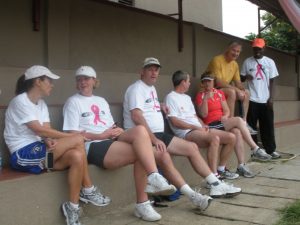
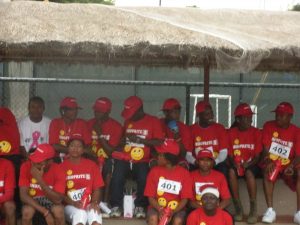
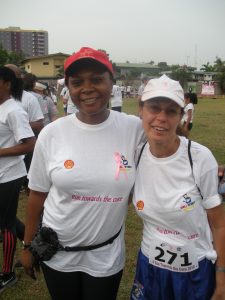
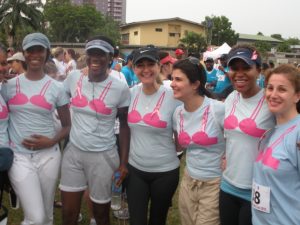
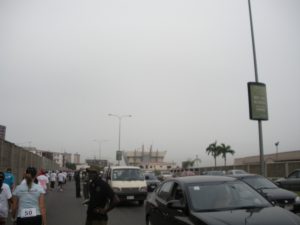
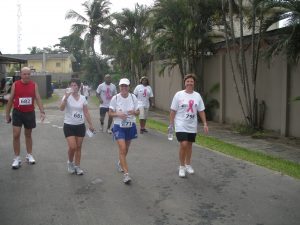

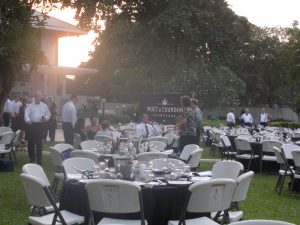
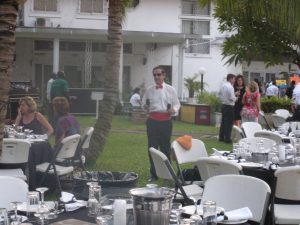 I love the black champange glasses!
I love the black champange glasses!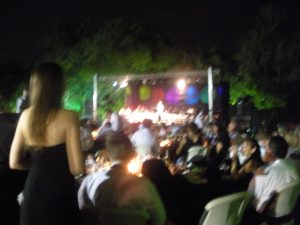
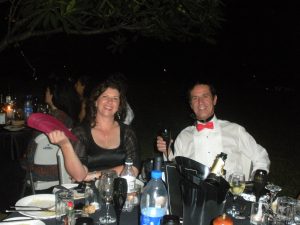 Katherine & Rocky
Katherine & Rocky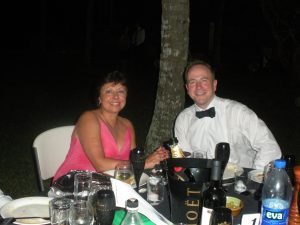 Sue and Ian
Sue and Ian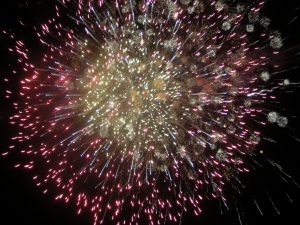
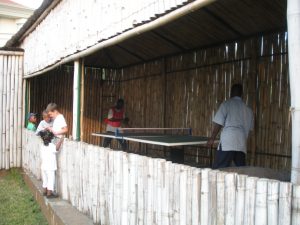 Ping Pong (table tennis) match for the non-footballers.
Ping Pong (table tennis) match for the non-footballers. 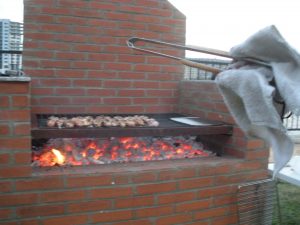 The new grill
The new grill 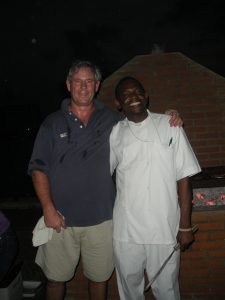 Grillmaster Eric and Chef Emanual
Grillmaster Eric and Chef Emanual 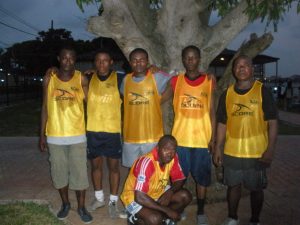 The winning team! Captain Sunday (standing in black far right).
The winning team! Captain Sunday (standing in black far right). 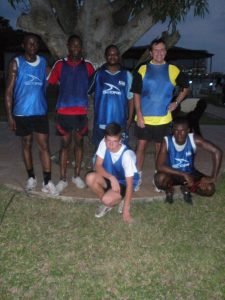 The Blue Team & Captain (tall) Sunday (on the far left standing).
The Blue Team & Captain (tall) Sunday (on the far left standing). 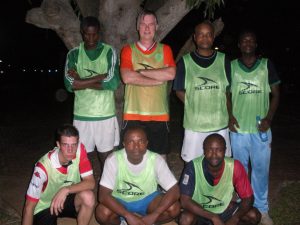 Captain Richard (standing far right) and the Green team.
Captain Richard (standing far right) and the Green team. 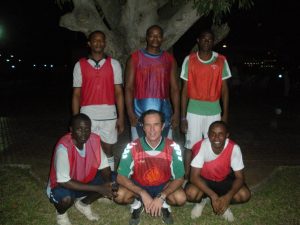 Captain Emmanual (standing middle) and the Red Team. Notice Rocky front and center.
Captain Emmanual (standing middle) and the Red Team. Notice Rocky front and center. 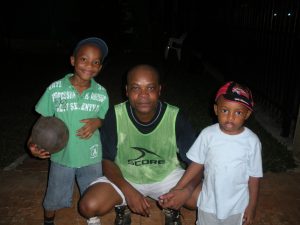 Kay and sons
Kay and sons 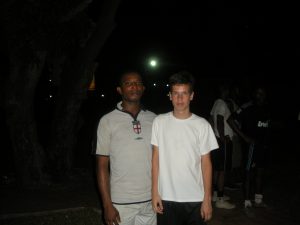 Players (martin the photographer on the right) Below (5 pictures); players, family and friends………
Players (martin the photographer on the right) Below (5 pictures); players, family and friends……… 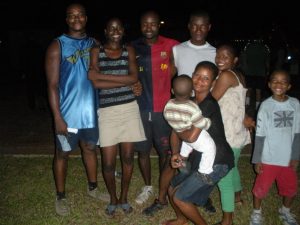
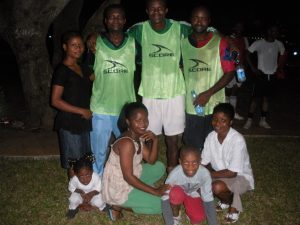

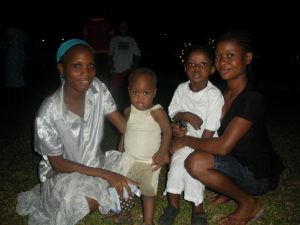
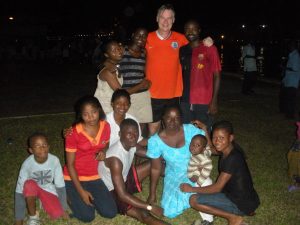
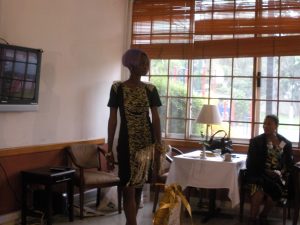
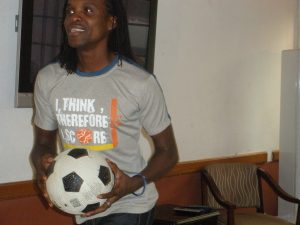
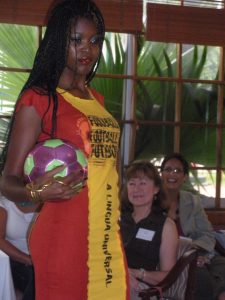
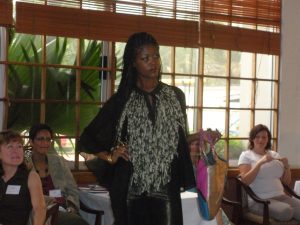
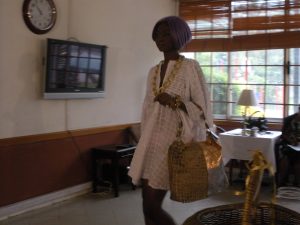
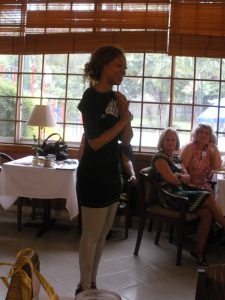
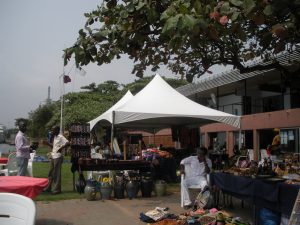
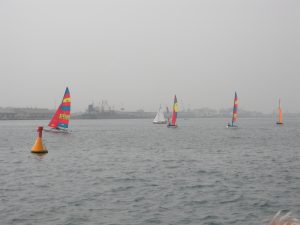
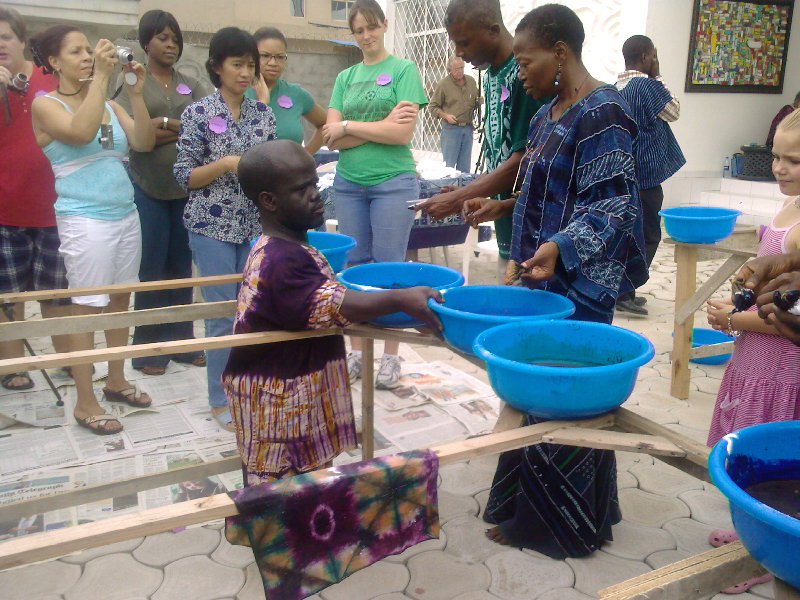 You can see the dye pots and a hankerchief; Nike is in the blue and she had several of her artists assisting her.
You can see the dye pots and a hankerchief; Nike is in the blue and she had several of her artists assisting her.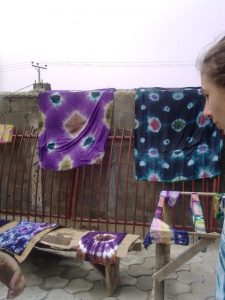 Some of our creations
Some of our creations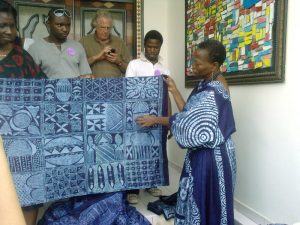 A batik Nike made.
A batik Nike made.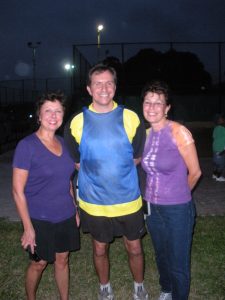 My new tie dye t-shirt!
My new tie dye t-shirt!